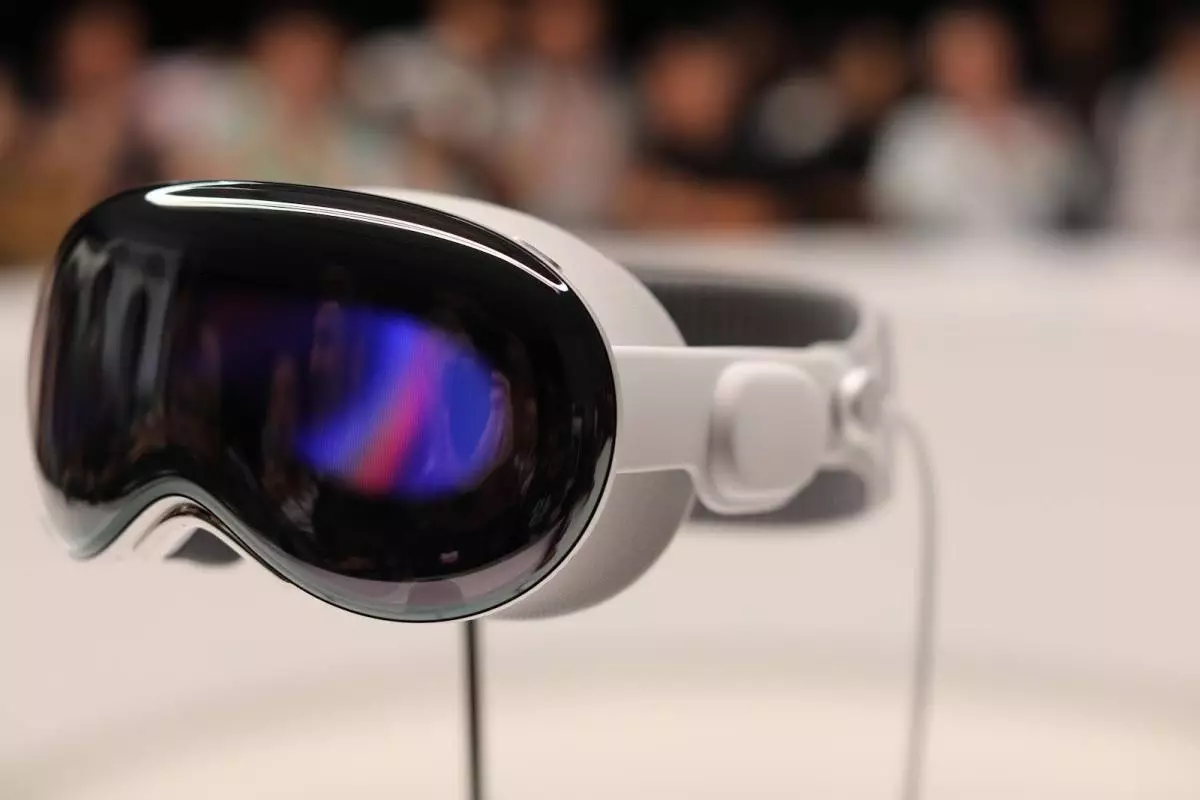Apple continues to innovate at the intersection of technology and user experience with its latest update for the Vision Pro headset, scheduled for release as part of visionOS 2.4 in April. The integration of Apple Intelligence marks a significant milestone, showcasing the company’s commitment to enhancing user engagement through advanced generative AI features. While developers currently have access to a beta version of the software, the public will soon experience a transformative shift in how they interact with this cutting-edge spatial computing device.
The introduction of generative AI features like Rewrite, Proofread, and Summarize aims to streamline workflows and foster productivity among users. These tools are reminiscent of those offered in Apple’s existing ecosystem—iOS, macOS, and iPadOS—but are tailored to the unique capabilities of the Vision Pro. By positioning this headset as a more sophisticated extension of traditional desktop computing, Apple departs from the generic framework of other extended reality devices, thereby redefining user expectations and experiences in spatial computing.
While the Vision Pro boasts a rich multimedia experience with video, gaming, and entertainment options, its true potential lies in its combination of voice commands and AI-powered text generation. Apple aims to address the cumbersome nature of composing text on the device—a task that can be tedious when relying solely on the default typing method. Users must focus on a specific letter and execute a two-finger pinch to select it, making lengthy text composition an arduous endeavor.
To counter this issue, Apple has significantly upgraded Siri to facilitate voice dictation, enhancing the headset’s ability to interpret natural language. The goal is clear: to streamline user interaction with text-related tasks. Supportive features such as Message Summaries and Smart Reply are designed to minimize distractions and allow users to engage in a seamless workflow while interacting with different applications.
As users familiarize themselves with the generative capabilities, the hope is that they will transition to incorporating the Vision Pro into their daily routines—whether that involves email communication, social media engagement, or content creation.
A standout feature in the upcoming update is the ‘Image Playground,’ which harnesses the power of generative AI to allow users to create visual content directly through verbal prompts. This significant innovation integrates smoothly into the Photos app of the visionOS, enabling a new level of creativity and expression for users. Considering how essential visual content is in today’s digital landscape, this feature could propel the headset into the creative workflows of designers, marketers, and casual users alike.
Unlike other conventional extended reality devices, the Vision Pro’s objective is not merely entertainment; it is about redefining digital interactions and enhancing creative capabilities in a spatial computing environment. This nuanced differentiation could encourage an influx of creative professionals to adopt the device, ultimately expanding its user base and applications.
Another noteworthy aspect accompanying the visionOS 2.4 update is the introduction of a Vision Pro iPhone app, set to complement the headset’s capabilities effectively. This app serves multifunctional purposes—foremost among them is the ability to browse visionOS content remotely, alleviating the physical and comfort constraints of using the headset for prolonged periods.
With the app, users can transfer their chosen content from the iPhone to the Vision Pro, ensuring a more user-friendly approach to consuming entertainment. Furthermore, it addresses potential discomfort and battery life issues associated with extended headset usage. The app also enhances guest account management, allowing for a more seamless multi-user experience, further optimizing the Vision Pro’s user engagement.
As Apple continues to develop the Vision Pro, the marriage of generative AI with extended reality presents significant prospects for future iterations. The company’s commitment to refining user interactions through continual updates signals a proactive approach to maintain relevance in an increasingly competitive market. The next phase of spatial computing epitomizes not just immersion but also productive engagement, revealing a newfound emphasis on practicality without sacrificing the immersive entertainment experience.
The arrival of Apple Intelligence in Vision Pro ushers in an exhilarating chapter for both Apple and users, promising a seamless blend of creativity, productivity, and entertainment in the realm of personal computing. As developers and users alike engage with this innovative technology, the trajectory of spatial computing may witness a transformative leap in how individuals connect, create, and collaborate in an increasingly digital world.

